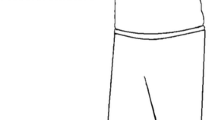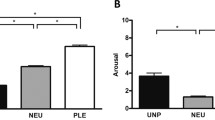Abstract
In our daily lives, we can appropriately perform movements on the earth, suggesting that the central nervous system takes into account gravitational forces that act on our bodies during the movements. Recently, gravitational forces have been observed to generate the direction-dependent differences in the spatial properties of the kinematics of prehension movements. However, little is known about how gravitational forces affect the temporal properties of the kinematics of these movements. In this study, we tried to elucidate the gravitational effects on the temporal properties of the kinematics of movements by comparing upward (against gravity) and downward (with gravity) movements. As a result, we found the direction-dependent differences in temporal kinematics in both the reaching and grasping components of movements. For the reaching component, a shorter acceleration time was observed for the upward movements compared to the downward movements. For the grasping component, participants opened their hands earlier and faster for the upward movements than for the downward movements. These direction-dependent differences in the temporal kinematics suggested that the central nervous system takes into account and takes advantage of gravitational effects in the motor plans and controls of vertical prehension movements.




Similar content being viewed by others
References
Bock O (1996) Grasping of virtual objects in changed gravity. Aviat Space Environ Med 67(12):1185–1189
Bresciani JP, Blouin J, Popov K, Bourdin C, Sarlegna F, Vercher JL, Gauthier GM (2002) Galvanic vestibular stimulation in humans produces online arm movement deviations when reaching towards memorized visual targets. Neurosci Lett 318(1):34–38
Carnahan H, Goodale MA, Marteniuk RG (1993) Grasping versus pointing and the differential use of visual feedback. Hum Mov Sci 12(3):219–234
Churchill A, Hopkins B, Ronnqvist L, Vogt S (2000) Vision of the hand and environmental context in human prehension. Exp Brain Res 134(1):81–89
Connolly JD, Goodale MA (1999) The role of visual feedback of hand position in the control of manual prehension. Exp Brain Res 125(3):281–286
Crevecoeur F, Thonnard JL, Lefevre P (2009) Optimal integration of gravity in trajectory planning of vertical pointing movements. J Neurophysiol 102(2):786–796
Fitts PM (1954) The information capacity of the human motor system in controlling the amplitude of movement. J Exp Psychol 47(6):381–391
Furuya S, Osu R, Kinoshita H (2009) Effective utilization of gravity during arm downswing in keystrokes by expert pianists. Neuroscience 164(2):822–831
Gaveau J, Papaxanthis C (2011) The temporal structure of vertical arm movements. PLoS ONE 6(7):e22045
Gentili R, Cahouet V, Papaxanthis C (2007) Motor planning of arm movements is direction-dependent in the gravity field. Neuroscience 145(1):20–32
Harris CM, Wolpert DM (1998) Signal-dependent noise determines motor planning. Nature 394:780–784
Jakobson LS, Goodale MA (1991) Factors affecting higher-order movement planning: a kinematic analysis of human prehension. Exp Brain Res 86(1):199–208
Jeannerod M (1981) Intersegmental coordination during reaching at natural visual objects. In: Long J, Baddeley A (eds) Attention and performance IX. Lawrence Erlbaum, Hillsdale, pp 153–169
Jeannerod M (1984) The timing of natural prehension movements. J Mot Behav 16(3):235–254
Jeannerod M (2009) The study of hand movements during grasping. A historical perspective. In: Nowak DA, Hermsdörfer J (eds) Sensorimotor control of grasping: physiology and pathophysiology. Cambridge university press, Cambridge, pp 127–140
Jones KE, Hamilton AF, Wolpert DM (2002) Sources of signal-dependent noise during isometric force production. J Neurophysiol 88(3):1533–1544
Le Seac’h AB, McIntyre J (2007) Multimodal reference frame for the planning of vertical arms movements. Neurosci Lett 423(3):211–215
Oldfield RC (1971) The assessment and analysis of handedness: the Edinburgh inventory. Neuropsychologia 9(1):97–113
Papaxanthis C, Pozzo T, Stapley P (1998) Effects of movement direction upon kinematic characteristics of vertical arm pointing movements in man. Neurosci Lett 253(2):103–106
Papaxanthis C, Pozzo T, Schieppati M (2003) Trajectories of arm pointing movements on the sagittal plane vary with both direction and speed. Exp Brain Res 148(4):498–503
Papaxanthis C, Pozzo T, McIntyre J (2005) Kinematic and dynamic processes for the control of pointing movements in humans revealed by short-term exposure to microgravity. Neuroscience 135(2):371–383
Pozzo T, Papaxanthis C, Stapley P, Berthoz A (1998) The sensorimotor and cognitive integration of gravity. Brain Res Brain Res Rev 28:92–101
Rand MK, Lemay M, Squire LM, Shimansky YP, Stelmach GE (2007) Role of vision in aperture closure control during reach-to-grasp movements. Exp Brain Res 181(3):447–460
van de Kamp C, Zaal FT (2007) Prehension is really reaching and grasping. Exp Brain Res 182(1):27–34
van Vliet P, Pelton TA, Hollands KL, Carey L, Wing AM (2013) Neuroscience findings on coordination of reaching to grasp an object: implications for research. Neurorehabil Neural Repair 27(7):622–635
Verheij R, Brenner E, Smeets JB (2013) Gravity affects the vertical curvature in human grasping movements. J Mot Behav 45(4):325–332
Acknowledgments
We would like to thank Professor Bernard Cohen of Mount Sinai School of Medicine for his beneficial advice. This study was supported by a grant for the fellows of the Japan Society for the Promotion of Science (to S.Y.) and a grant-in-aid for scientific research (to K.K.).
Author information
Authors and Affiliations
Corresponding author
Rights and permissions
About this article
Cite this article
Yamamoto, S., Kushiro, K. Direction-dependent differences in temporal kinematics for vertical prehension movements. Exp Brain Res 232, 703–711 (2014). https://doi.org/10.1007/s00221-013-3783-y
Received:
Accepted:
Published:
Issue Date:
DOI: https://doi.org/10.1007/s00221-013-3783-y




